What I figured out about Tesla’s future after finally driving one myself
It’s easy to forget that Elon Musk’s electric car company, Tesla Motors, is still very much in its infancy. It’s been listed on the stockmarket for barely four years and has sold only about 40,000 vehicles.


It’s easy to forget that Elon Musk’s electric car company, Tesla Motors, is still very much in its infancy. It’s been listed on the stockmarket for barely four years and has sold only about 40,000 vehicles.
Yet the company, which is now worth more than $32 billion, attracts a disproportionate amount of media attention. That’s because many people (like us) think it has the potential to revolutionize not just the $1 trillion-dollar-a-year global automobile industry, but potentially the way we consume and store energy.
America, like few other countries, celebrates its entrepreneurs as heroes. And at the moment, there is no more exciting business figure in the country than Musk. Having written fairly regularly about Tesla myself, I decided it was time to finally see what all the fuss was about. A couple of weekends back, thanks to the company, I finally got to drive a Tesla Model S. Here is what I found out.
The hype is justified…
I’m not a huge car person. I have lived most of my adult life in cities where it is easier to not own an automobile. The only vehicle I have ever owned is a (diminutive by American standards) Toyota Yaris. That said, I really enjoy driving, and have been lucky enough to sit behind the wheel of a few superb cars over the years, including two Porsche Boxsters, a Mercedes SUV, and BMW’s 3 and 5 series. I can confidently say none of them matches the driving experience of the Model S.
Put simply, it is a joy to drive. Acceleration is rapid and effortless, which makes aspects of ordinary driving like overtaking people, changing lanes and evading tail-gaters remarkably satisfying. It handles superbly, gliding around curves and corners with ease, never feeling unsafe. Actually, the only unsafe thing about it is that the Model S can seduce you into driving faster than you otherwise would.
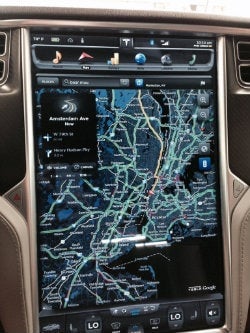
As befits a technology-focused company, the experience is not just about the driving. There is a huge central touchscreen, about the size of two iPads, where you can adjust controls from the air-conditioning to the brake settings. There is a full cellular connection to the internet—which was remarkably strong and much more consistent than my phone’s—an in-built navigation system, and access to to Slacker, a streaming audio service.
The car is also more spacious than you’d expect for what’s marketed as a sports car. It comfortably seats five and there is room for storage in both the trunk and the front, where you’d normally expect an engine. Tesla’s flat, lithium-ion batteries occupy almost the entire underside of the car.
The only drawback is that, for a car so nimble, it is deceptively wide, making parking in certain spaces a bit awkward.
You’re the center of attention, but in a good way…
Tesla is a highly divisive company. To paraphrase tech columnist Farhad Manjoo, like Apple, it seems to inspire evangelical fervor among its fans and incredulous, irrational hatred among its detractors. Occasionally articles we write about the company draw angry comments from investors who feel it’s overvalued. Other people get upset that electric car makers enjoy cheap loans and other government incentives.
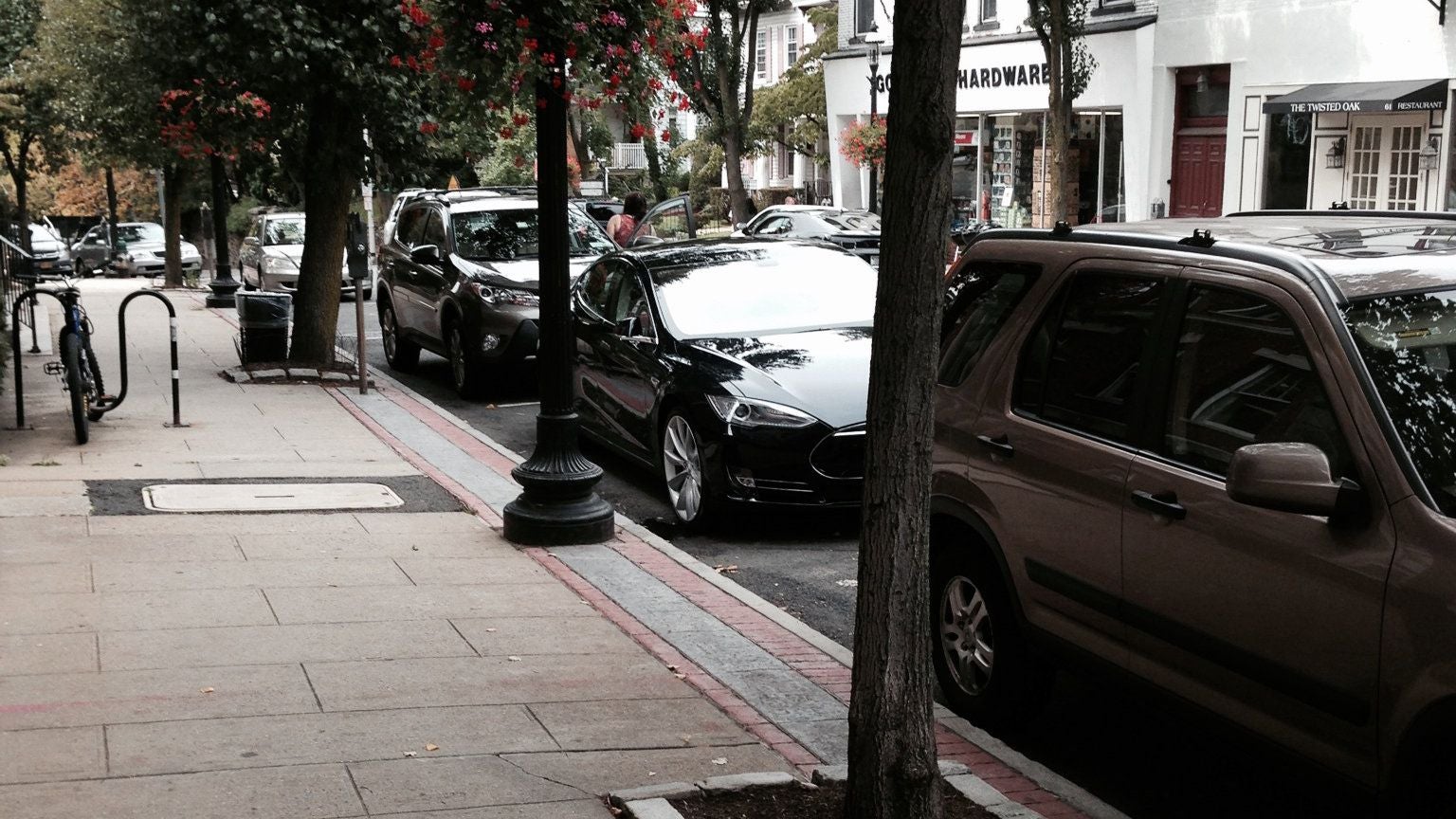
When you are actually driving a Tesla, at least in the relatively well-off towns around New York that my wife and I visited, the reaction is almost unfailingly positive. The car itself is relatively inconspicuous—it doesn’t stand out like a Ferrari, say—but people still seem to notice it. Passersby give the thumbs-up for no reason. “Never seen one of those up here before,” remarked a middle-aged female onlooker when I parked the Model S on “Main St” (literally) in a suburban Westchester town. “We don’t get them here yet. I just got back from northern Europe, and they were everywhere,” she said.
Yes, it takes a while to charge…
When we left home on a Saturday morning, the car was basically fully charged. The dashboard stated a range of 250 miles. After riding it around upper Manhattan, New Jersey (where Tesla sales are banned, owing to lobbying by other car dealers) and New York’s Hudson Valley, it still had more than 100 miles left on it by mid-afternoon. That was more than enough to get back to Manhattan. But I wanted to see what charging was like.
The navigation system told us that the nearest supercharger station on the route we had taken was in Greenwich, Connecticut. After meandering around back roads for a while, we found it. I had pictured a gleaming Tesla facility, where entrepreneurs convene to talk about their investments and vacations over single-origin hand-brewed organic coffee while waiting for their vehicles to charge up.
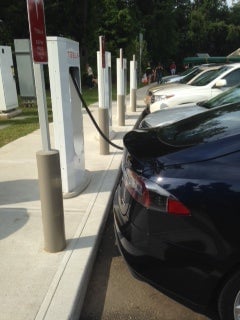
In fact, it was four parking slots in a run-of-the-mill gas station, each with a Tesla charging pump next to it. All four were occupied, but luckily, as we we approached, one car was leaving. It wasn’t a Tesla. Nor were the other three. People were simply using the slots to park in.
To get it back to fully charged took about 30 minutes, which might be annoying if you are in a rush. But simple planning can mitigate this (you can charge the car overnight at home via an ordinary or high-voltage power socket). And on this occasion, the wait gave me another opportunity to gauge people’s perceptions of the car and the company.
One friendly, affluent looking couple in a Mercedes SUV parked next to us were fascinated, asking my wife and I how much the Model S cost, how long it takes to charge up and what it was like to drive. I overheard another, younger group who had piled out of their Honda Civic for a cigarette break, debating amongst themselves whether the car was American or not. One of the group approached to ask whether the car was fully electric, and seemed skeptical when I confirmed it was. They said they had not heard of Tesla before. Another man from Washington state said it was the first time he had seen a Tesla on the east coast (“They’re everywhere in Seattle.”)
The only person I met who had seen a Tesla in these parts before was the gas station’s janitor, named Brian. ”All the time,” he said when I asked whether any of the cars come to the charging station. ”You are standing in one of the richest counties in America.” I told him the car wasn’t mine, but didn’t get the chance to explain to him that I was test driving it not as a potential owner, but as a journalist. “You gotta look at it as an investment,” he said. “You never gotta pay for gas again, you never gotta to pay for anything again, except to maybe clean it. It’s the future.”
It’s not a fair fight
The Model S is an automotive thing of beauty. Yet Tesla’s huge stock-market run (shares are up about 1,200% since its mid-2010 IPO) doesn’t really have anything to do with the Model S. The company’s enormous valuation is built on the belief that Tesla can achieve great things in the (not too distant) future.
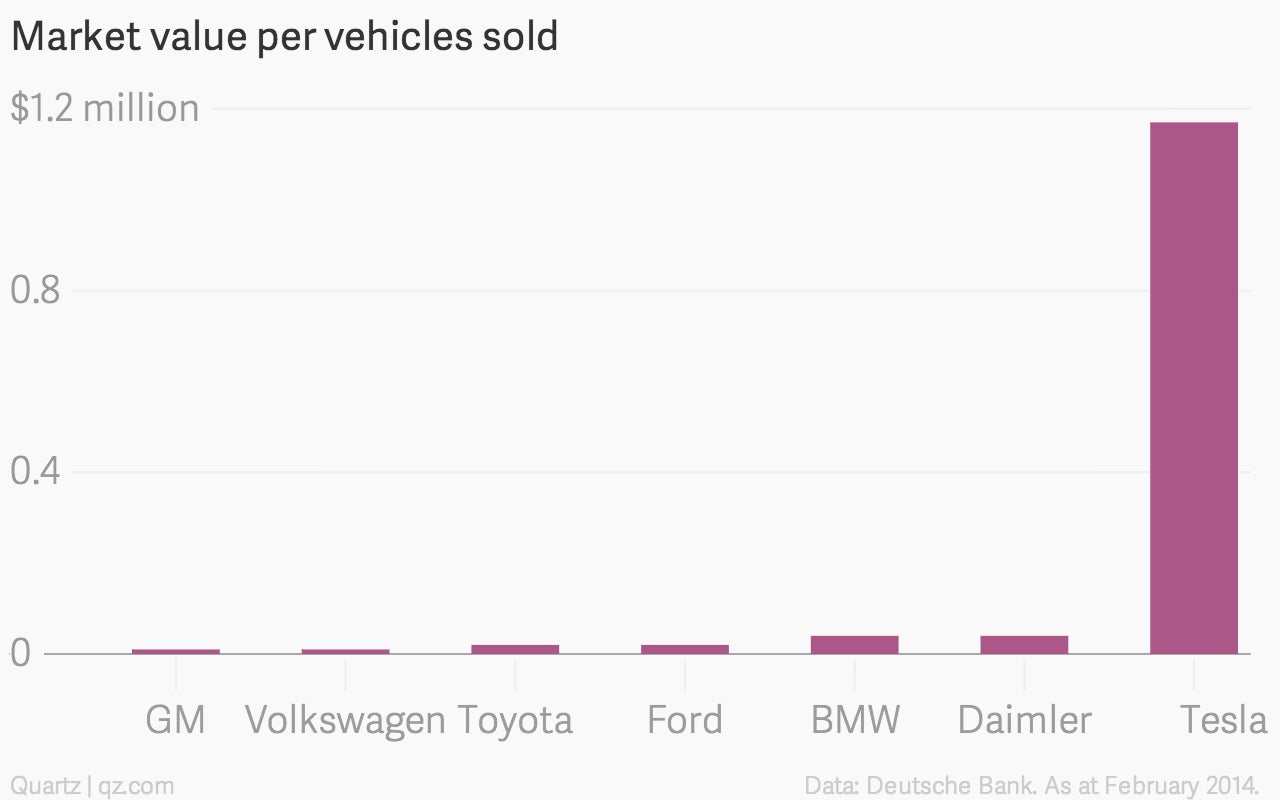
Surprisingly, despite rave reviews for Tesla, most established automakers don’t seem to be taking electric vehicles all that seriously, though GM appears to be preparing to challenge Tesla’s next cheaper car, the Model 3, for the high-end mass-market.
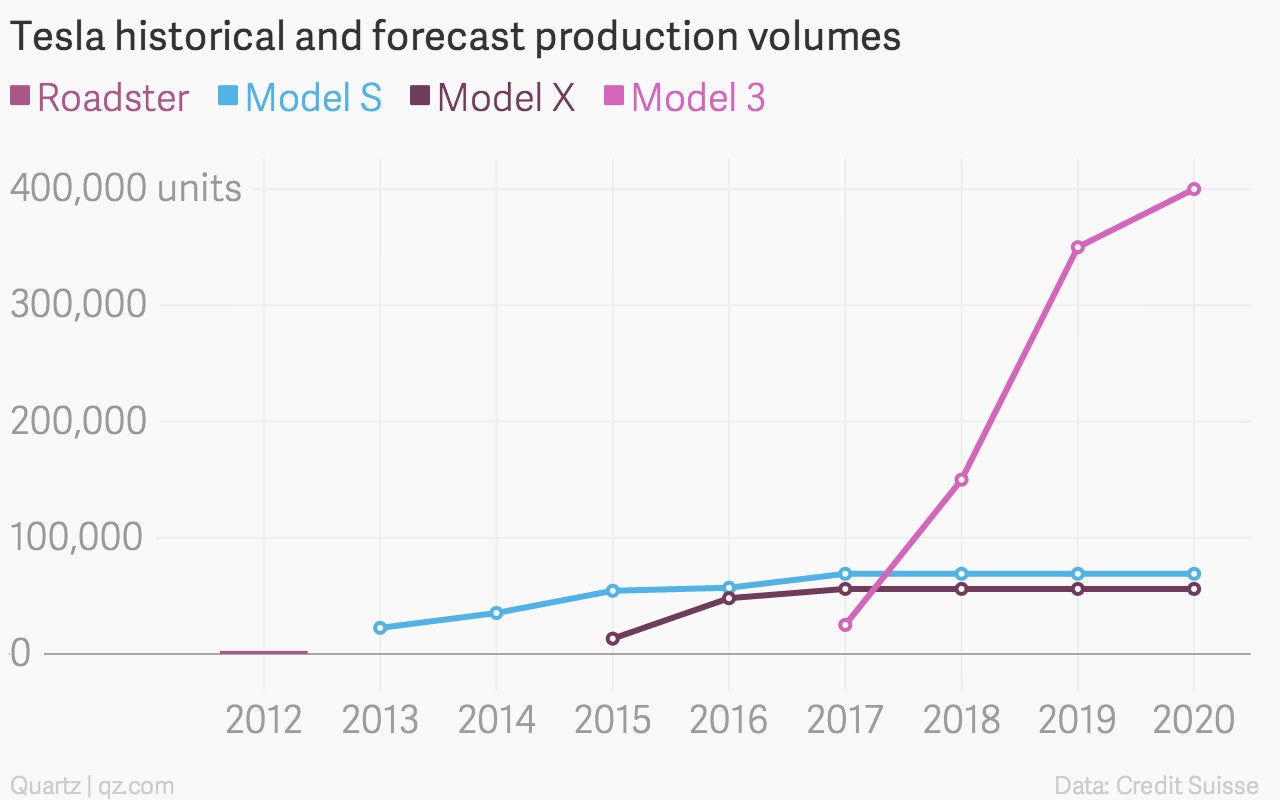
A part of Tesla’s appeal is Musk himself. The PayPal co-founder, now a leading entrepreneur in space travel and solar energy as well as electric cars, is not only a magnetic personality for the Tesla brand, but responds directly to his customers and commands their loyalty in a way that is hard to imagine from the boss of GM, BMW or any other car company. Here’s how he responded when two “VERY highly satisfied Tesla owners” placed a newspaper ad, requesting minor tweaks—among others things, that the cup holders be moved forward.
All of this means Tesla’s head start in electric vehicles may persist for a while longer, and even end up being unassailable. For some, the superior driving experience is already enough.”We believe that Tesla has already proven that [electric vehicles] are inherently better, although most industry observers, and certainly the general public, don’t know it yet,” Credit Suisse analysts recently wrote.
Having driven one myself, I can only agree.